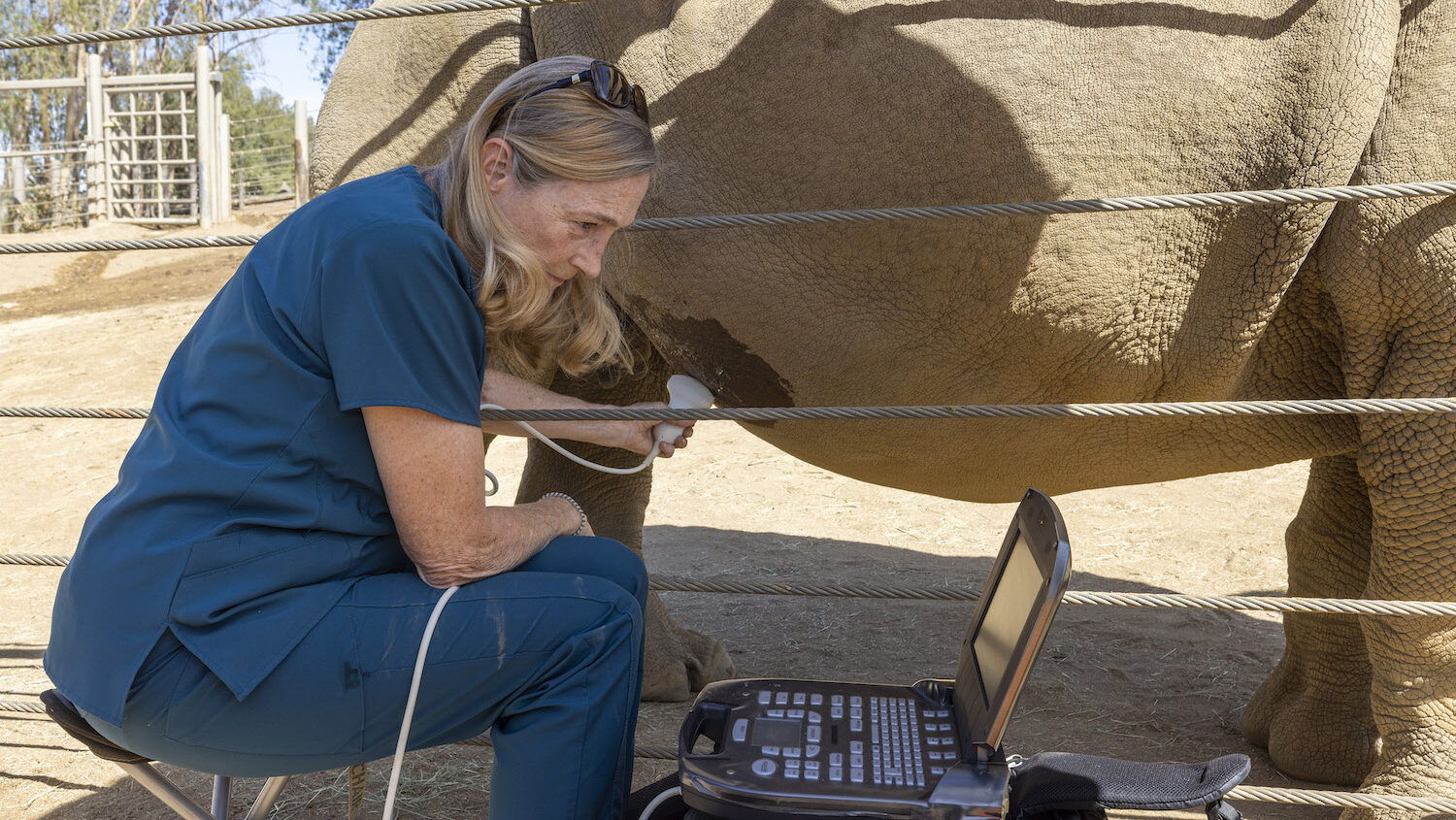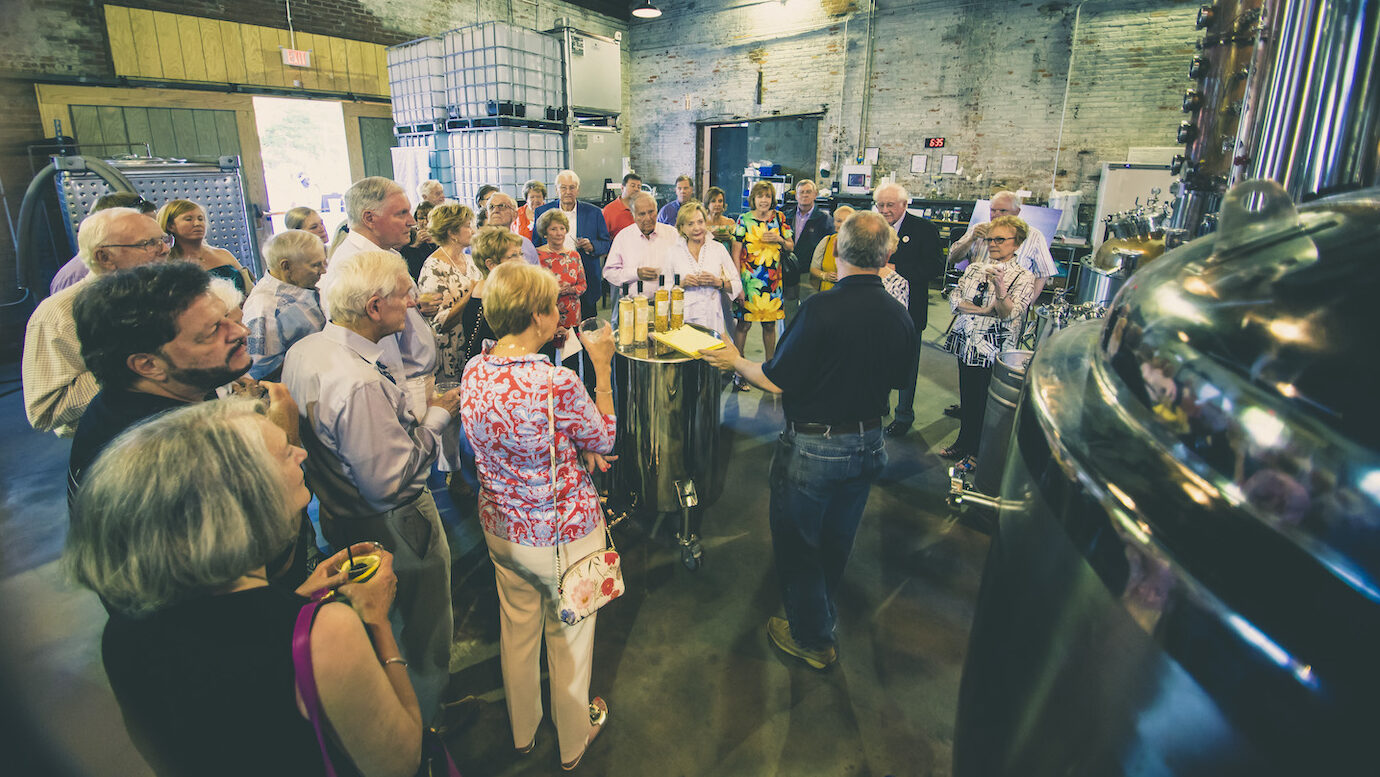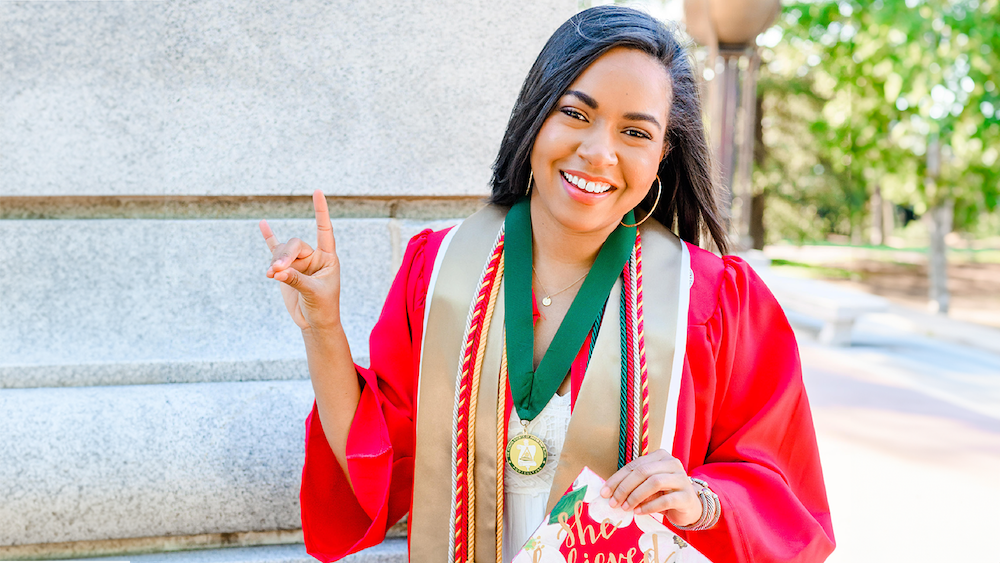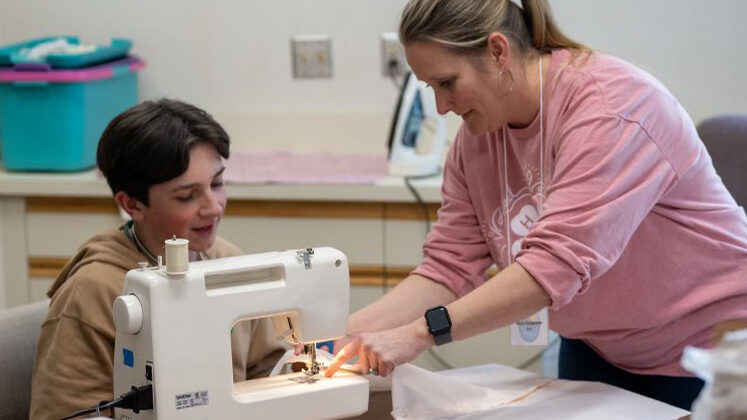Birds, Bees and Rhino Babies
CALS alumna Barbara Durrant studies reproductive physiology at the San Diego Zoo Wildlife Alliance. Her goal? To save species from extinction.

From rattlesnakes to rhinos, Barbara Durrant, a three-time alumna from North Carolina State University’s College of Agriculture and Life Sciences, has worked with hundreds of different wildlife species throughout her nearly 45-year career at the San Diego Zoo Wildlife Alliance.
Her focus is the “birds and the bees” of zoo animals. As the Henshaw Endowed Director of Reproductive Sciences, she studies reproductive biology, endocrinology and behavior, and develops methods to encourage species reproduction with an important goal: conservation.
“What could be more interesting than reproduction? And the result is wonderfully cute babies of different species,” Durrant says.
A Wild Start
Durrant’s interest in animals began while growing up near Syracuse, New York. She enjoyed spending time outside observing the native wildlife, sometimes returning home with injured birds or mice.
“My parents were both in medicine, so when I brought home injured animals, they would help to rehabilitate and release them,” she explains.
Her parents urged her to become a vet, but she had her eyes set on exotic animals.
“Everywhere my family traveled, I always made them go to the local zoo,” Durrant says.
“There wasn’t anybody doing reproductive physiology, so I stepped into a job that wasn’t there and created one. It really was a dream job, and it still is.”
During high school, Durrant’s family moved to North Carolina, and she decided to study animal science at NC State. She was one of only two women in the animal science program at the time.
Durrant remembers being laughed at by her male classmates—who grew up on farms—because she didn’t have the same skills they did, but she didn’t let that stop her. After earning her bachelor’s degree, she earned a master’s in physiology and a doctorate in reproductive physiology, studying embryo metabolism and reproduction genetics, respectively. She received an Outstanding Alumni Award in 2022.

Saving Species
While earning her master’s degree, Durrant learned that the San Diego Zoo was starting a research program, and she reached out in hopes of landing a position there.
“I loved the idea of working with zoo animals, and it was the only zoo that had a research department,” Durrant says.
After earning her doctorate, she was hired as a postdoctoral researcher and helped start the now-famous Frozen Zoo, the largest bank of cryopreserved living exotic animal cells in the world.
“There wasn’t anyone doing reproductive physiology research at the zoo, so I stepped into a job that wasn’t there and created one,” Durrant says. “It really was a dream job, and it still is.”
Durrant leads a team of 16, and her lab manager, Nicole Ravida ’00, is also an NC State animal science graduate. One of the team’s main projects is helping the northern white rhino avoid extinction. Listed as “critically endangered,” there are only two northern white rhinos left worldwide, and they’re females who can’t reproduce.
The Frozen Zoo has cells from northern white rhinos, and researchers are hopeful they can revive the species through careful reproductive planning with their close relative, the southern white rhino, which is listed as “near threatened.” The zoo has six southern white rhinos that are specially trained for reproductive monitoring, such as ultrasound and hormone analysis. So far, Durrant’s team has welcomed two southern white rhino calves—Edward and Future—through artificial insemination; one from frozen semen, which had rarely been successful in rhinos, and one from chilled semen, which had never been successful in any rhino species.
Over the years, Durrant has also worked on the reproduction of giant pandas, antelope, koalas and cheetahs. With all of her wild success, she hasn’t forgotten about her time at NC State.
“All of my current work has a basis in the cattle, pigs and sheep I studied at NC State,” Durrant says. “There are variations, of course, but it’s the same basic studies that are stretched and manipulated for each species.”
- Categories:


